Artists' Books
Artists' Books

i apologize
(...) There is no one on the chair, there is no hand on the table, perhaps nobody on the floor. The set up is empty, but some kind of unsettling presence is undeniable. The set up is so obviously fake that there must be something behind it. I am not going to lie: I am going to lie.
If I lie, there is a deliberated stand. I don't have to be "true", to myself, to others. My intention is not to find lying moving, but those who can never lie cannot grow either, cannot discover who they really are. The people, that every day are forced to rip off their personality into fragments, know something about themselves and about life that nobody could teach them. Lying, betraying, is to want to or be able to transform a situation, a fact, an emotion, oneself. The act of lying suddenly un-conceals what has been considered as neutral or as the reference point. The power relations already in place are being revealed, "normality" appears as hegemony. The lie embodies a transgression. It is an attempt to escape normative structures and the refusal to assimilate them. (...)
Includes contributions by Christian Noelle Charles, Andrej Dubravsky, Sandra Golubjevaite, Lewis Hammond, Tarek Lakhrissi, Nils Amadeus Lange, Floriane Michel, Stijn Pommée, Adam Ulbert
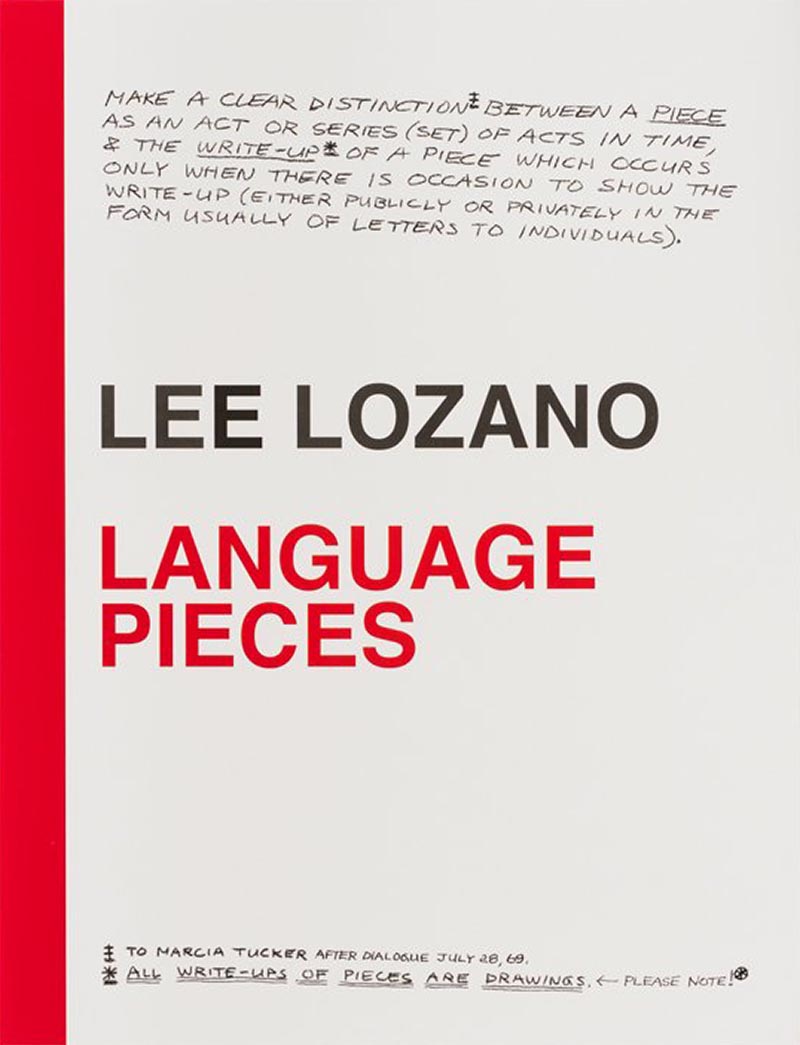
Language Pieces
In the late 1960s, Lee Lozano conceived of and executed a series of 'language pieces,' written in the pages of her notebooks, consisting of rules and parameters for the actions that would constitute a piece. From offering money to house-guests to smoking as much marijuana as possible, Lozano boldly tested social norms, culminating in two of her most famous works: 'General Strike Piece' (1969), which saw her retreating from the art world completely, and 'Decide to Boycott Women' (1971), in which she ceased engaging with all members of her own gender.
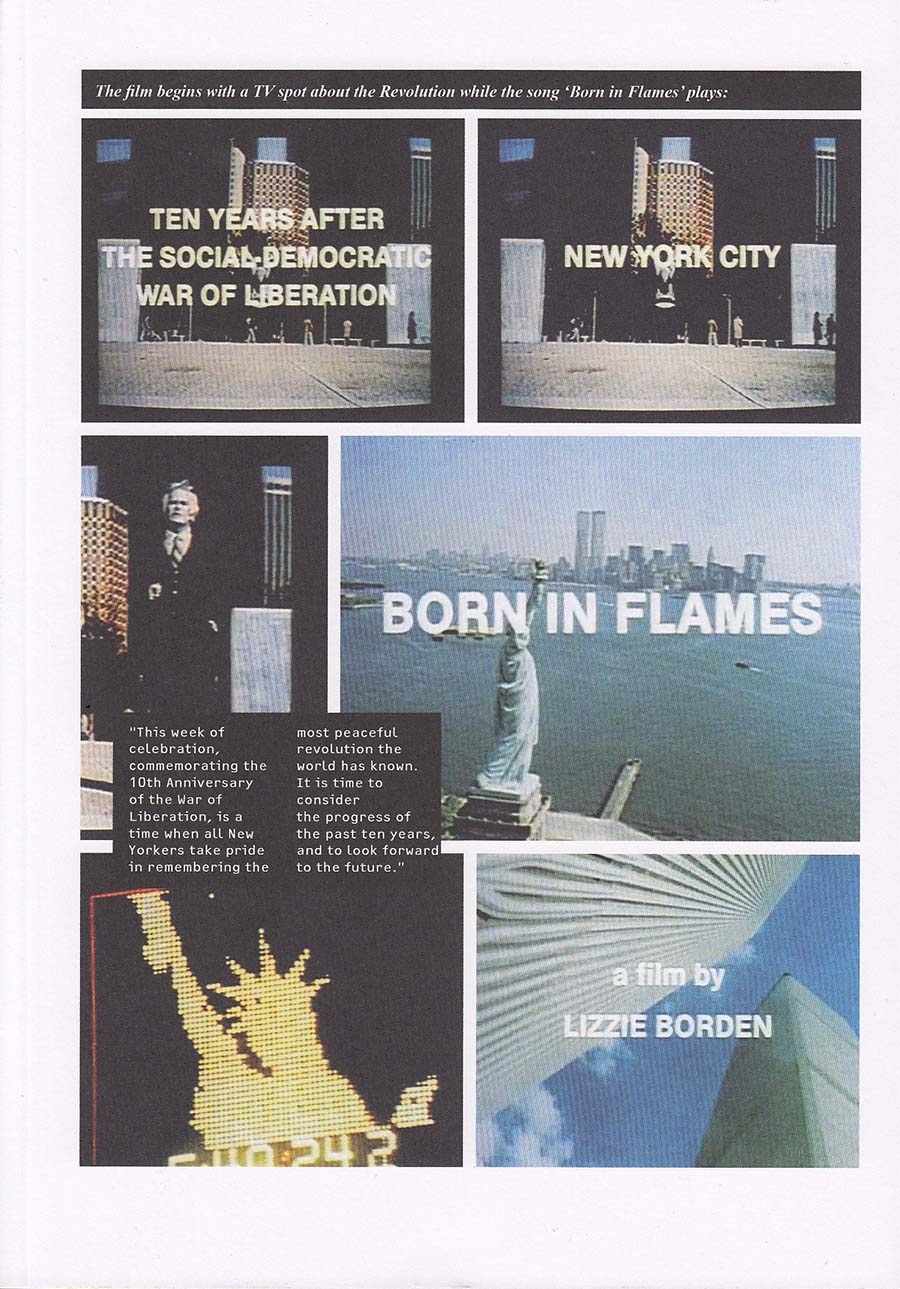
Born in Flames
Born in Flames – the publication – is the complete authorised graphic translation of Lizzie Borden’s mythical 1983 film Born in Flames. Kaisa Lassinaro’s post-facto screenplay captures all the political energy and visual brilliance of Borden’s film, which describes a futuristic society (eerily similar to our own) where the achievements of a past revolution are threatened by reactionary sexist forces.
The published version of Born in Flames allows for a frame-by-frame analysis of the film’s complex plot and soundtrack, with songs by The Bloods and Red Crayola. Included is an interview with Borden conducted by Lassinaro, in which the filmmaker looks back on the making of her film.

Silver Bandage
The Happy Hypocrite – Silver Bandage gathers together new kinds of writing about ‘vibes’, those often unspoken energies of desire and aversion that move between people, palpable but traceless, hard to prove. The messages sent by your gut that you can’t always interpret, beyond an urge. What is intangible – vibes, feelings and reflexive responses like blushes, fidgets, slumps in posture, fluctuations in voice – is now targeted by invasive technologies of affective measurement. How can writing resist this regime of quantification?
With an introduction by Maria Fusco, contributions and new work by CAConrad, Mel Y. Chen, Adam Gallagher, Alexandrina Hemsley, Rebecca Jagoe, Jessa Mockridge, Natasha Papadopoulou, Naomi Pearce, Parsa Sanjana Sajid, Patrick Staff, Daniella Valz Gen, and Hypatia Vourloumis. This issue’s archive is dedicated to Katerina Gogou.
Erica Scourti is an artist and writer, born in Athens and now based mostly in London, whose work explores biographical writing and bodily inscription in the performance of subjectivity. Her writing has been published in Spells, Ignota (2018) and Fiction as Method, Sternberg (2017), among others.

A Family in Brussels
Filmmaker Chantal Akerman presents A Family in Brussels, a fictional stream-of-consciousness text encompassing multiple subjectivities and laced with autobiographical references. This is the first English-language publication of the work, which Akerman wrote and first performed as a monologue in Paris and Brussels. The accompanying recording documents the theatrical reading that took place at the Dia Center for the Arts, New York, in October 2001. The listener can hear Akerman's singular voice as she muses on familial relations, communication, closeness, and distance.
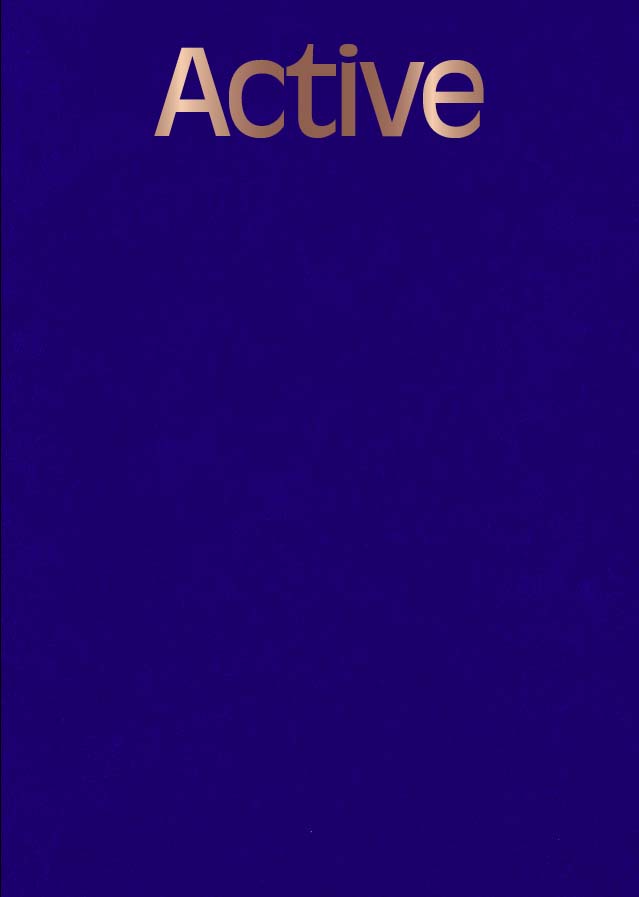
Active Art
Barbara Sirieix, Maija Rudovska and 1 more
In this book, the 1923 manifesto “Active Art” by Latvian philosopher Andrejs Kurcijs triggers a series of responses by writers, artists and curators on the notion of activism, past and present: art for political purposes, art for its own purpose or art with no purpose.
All the texts collected in this volume aim at considering the active part of writing according to the definition given by Kurcijs. It is true of the book design by Laure Giletti and Gregory Dapra too. Contributors include curator Rebeka Põldsam, artists Evita Vasiļjeva and Eva Barto, writers Bella Marrin and Robert Glück, and poet Laura Boullic. It also includes the reprint of an essay from 1987 by James Baldwin, commissioned by the African Center in New York, and an in-depth conversation between the editors of the books and philosopher Ainārs Kamoliņš.
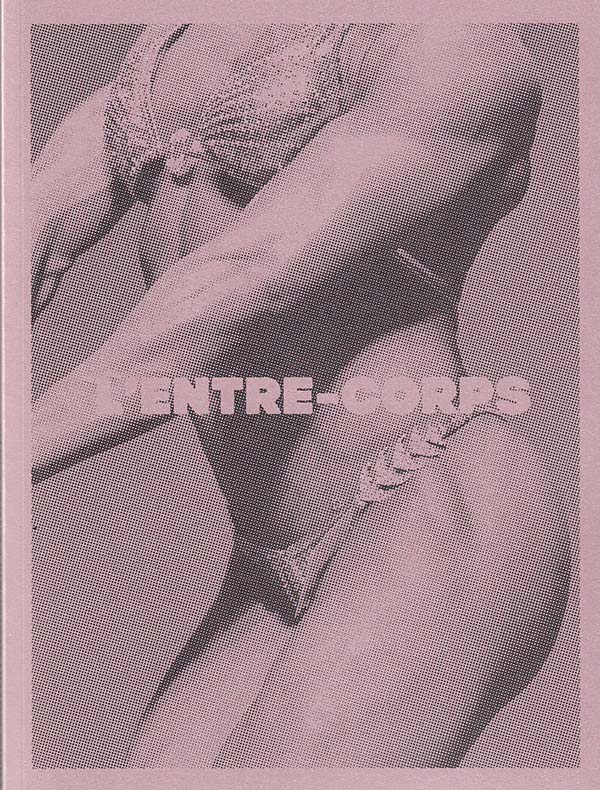
L'entre-corps
Laure Cottin-Stefanelli, Peter Snowdon
Centré sur la mise en jeu du corps filmé et du corps filmant dans leurs pratiques cinématographiques respectives, la Conversation de Laure Cottin Stefanelli et Peter Snowdon a commencé par une présentation croisée de leurs films à Bozar en discussion avec Septembre Tiberghien et s'est cloturée par une exposition intitulée INNER SENSE - Bodies At Work, à la galerie de l'ERG de décembre 2018 à janvier 2019.

Second Sex War
Sidsel Meineche Hansen, Robert Leckie
Stemming from a series of works by Sidsel Meineche Hansen, this monographic catalogue offers a range of perspectives on urgent issues around gender, sexuality and labour in the digital age.
This book orbits “Second Sex War”, a series of works by Sidsel Meineche Hansen addressing political and ethical questions arising from the use of digital bodies in contemporary visual culture and the means of production and distribution for these commodities. Realising that the same avatars are used across the pornographic, gaming and cultural industries, she investigates the working conditions and relationships that structure these fields. Through numerous essays and conversations, Second Sex War, the book, emphasises her collaborations with various practitioners (animators, musicians, writers) and the way they have inflected her practice. Media theorist Helen Hester (author of the Xenofeminist manifesto) reflects on the limitations of the porn industry and the use of female avatars. Artists collective Radclyffe Hall talks to photographer Phyllis Christopher about early lesbian erotica magazine in the 1980s. Linda Stupart compiles quotes by Sara Ahmed, Kathy Acker and Ursula K. Le Guin to consider what is radical sex today. Artist Hannah Black's contribution, which opens the publication, reads like a manifesto for artists being crushed under the weight of current political circumstances.
Edited by Sidsel Meineche Hansen and Robert Leckie.
Texts by Robert Leckie, Hannah Black, Helen Hester, Phyllis Christopher & Radclyffe Hall, Linda Stupart, Josefine Wikström. Entretiens with Helena Vilalta, James B Stringer, Melika Ngombe Kolongo (Nkisi) by Sidsel Meineche Hansen.
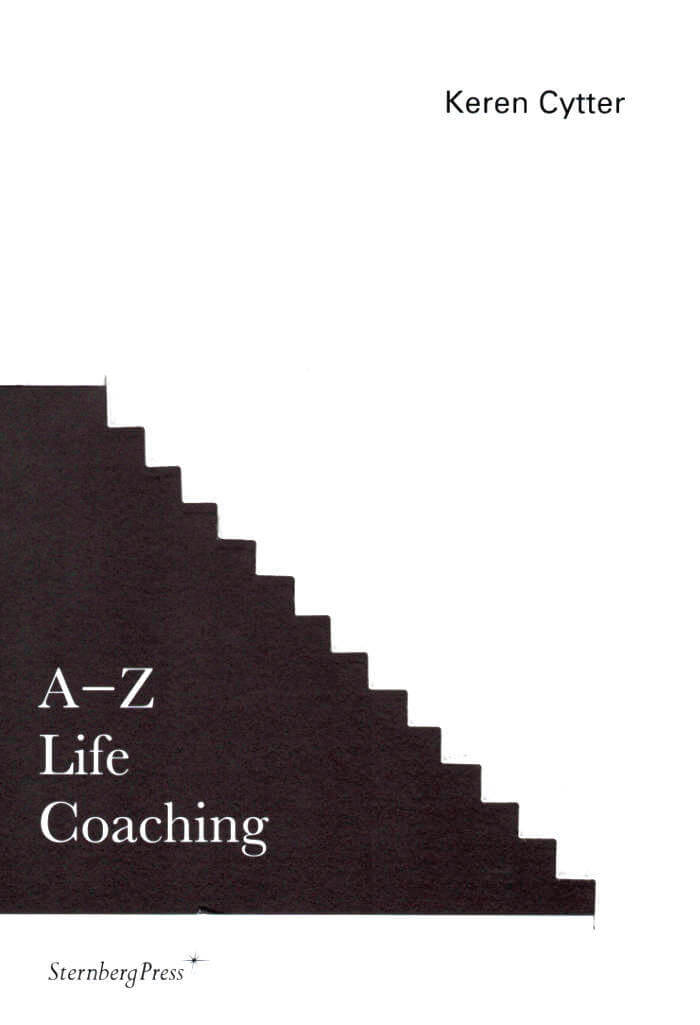
A-Z Life Coaching
A novel by Keren Cytter: an incomplete guide for life.
Each person written about is represented by a letter, and when an object turns into a subject it is marked in bold. The form of life coaching described in this book won't lead the reader to social recognition or financial success. If one of the two occurs after reading this text, it is a coincidence. This book aims to expose the owners of an innocent heart to reality's true structures and to utilize them for spiritual growth so their soul and body evaporate into the abstract. This book was written from the middle. The contents of these pages have been modified numerous times. Notes were taken, ideas were rewritten—the ones that survived bare the most essential guidelines and wisdom for life.
Published on the occasion of the exhibition “Keren Cytter – Selection”, Künstlerhaus, Halle für Kunst & Medien, Graz, from June 11 to September 8, 2016.

Anabases
This book documents an installation by Eric Baudelaire revisiting the political and personal saga of the Japanese Red Army as an anabasys—an allegory of a journey that is both a wandering into the unknown and a return back home.
“This book is not for reading but for wandering. Its lines do not roll out continuously but superimpose each other to infinity, creating not a compendium of knowledge but a web of prescience. It does not follow a logical framework but unfurls a grid with multiple entries. It does not assert a set subject or conclusive postulate. At most it invites us to probe the recesses of a mind in motion, and steeps us in the driving material that brings it to life. It reflects the works it exhibits, the documents it discloses and the commentary it generates: it aspires to ubiquity. Anabasis, the very real linking thread that stitches it together, serves not just as an archaeological enigma, but also as an allegorical force. The main author of this ocean crossing, Eric Baudelaire, is both a collector of vestiges and a sketcher of wandering lines who has surrounded himself with other meticulous voices (Pierre Zaoui, Homay King, Jean-Pierre Rehm), fellow-travellers in this library secret. Readers will be able to enjoy the gradual unfolding of the story of war and politics whose underlying intellectual and poetic adventure this book enables us to recall—that of its repetitions, ramifications and hybridisations: the story of Anabasis after Anabasis (or from Xenophon's Anabasis to that of Paul Celan by way of Alain Badiou's), from an ancient narrative to its modern reappropriation.” — Morad Montazami
Edited by Eric Baudelaire and Anna Colin.
Texts by Morad Montazami, Pierre Zaoui, Homay King, Jean-Pierre Rehm.

Where is Cinema
This book is compiled of portraits of film initiatives from around the world, interwoven with conversations with adventurers who have rebooted movie theatres or built them up from the ground in the hope that it can be an inspiring compendium for future cinema builders, filmmakers, film curators and film lovers.
Anouk De Clercq in conversation with Verena von Stackelberg, Ana López Ortego and Daniel Bejarano, Ilona Jurkonytė and Ugnė Marija Andrijauskaitė, Adam Pugh, Thomas Liu and Silja Espolin Johnson, Erika Balsom, Beatrice Gibson, María Palacios Cruz and Ben Rivers, Heather Lane and Mia Ferm.
The author is an artist and filmmaker based in Brussels and Berlin. In her work, she explores the potential of audiovisual language to create possible worlds. She is affiliated as an artistic researcher to the School of Arts University College Ghent, and a founding member of Cinema Nova, Monokino and Auguste Orts.

A Long List Of Safe Words – (A.L.L.O.S.W)
A compilation of texts, poems and stories whose title is borrowed from the safe words used in BDSM practices.
Published on the occasion of the exhibition “Puberté 2”, Ravisius Textor, Nevers, from October 5 to November 16, 2019. Kevin Desbouis is a French artist and author.

The Lost Diagrams of Walter Benjamin
In A Berlin Chronicle Walter Benjamin describes his autobiography as a space to be walked (indeed, it is a labyrinth, with entrances he calls primal acquaintances). The contributors to The Lost Diagrams respond to the invitation to accompany Benjamin in reproducing the web of connections of his diagram, which, once lost (he was inconsolable), was never fully redrawn. They translate his words into maps, trees, lists, and constellations. Their diagrams, after Benjamin, are fragments, scribbles, indexes, bed covers, and body parts. Subjectivities sharpen and blur, merge and redefine, scatter and recollect. Benjamin writes: ‘Whatever cross connections are finally established between these systems also depends on the inter-twinements of our path through life’.
Contributors: Helen Clarke, Sam Dolbear, Sharon Kivland, Christian A. Wollin

Moi
The straplines of a number of advertisements drawn from magazines of the 1950s are turned into drawings, as though a particularly vain and narcissistic woman speaks (as of course she does), She is ‘en pleine forme’ of her beauty. (2016).

Library
LIBRARY contains four essays and two interviews, with the pre-dominant concern of sexual questions: the subjects in art, film, and literature—the issues tied to Rivette’s La Belle Noiseuse, Madonna’s sexual assault in Dangerous Game, Clunie Reid’s use of language, Richard Prince’s obsession with books, and Paul Meyersberg’s articulation about sex.
‘Like Carol Reed’s crippled trapeze artist now devoted to sensuality, Paul Buck is more than a suitable case for treatment. A personable deviant, Buck’s culpable, desiring proximity steeps these writings, inasmuch as they are apostrophised by his appearance in cameo, inside and outside the text. Buck stalks his work, addressing us in collusive asides. Rather than the disinterest of resistable objectivity, Buck’s criticism is moved by a profound personal investment in his subjects; he does not elide his complicity, nor does he quiet moral considerations. Discussing Richard Prince’s library or Madonna’s instrumentality, Buck makes the possessive, accountable case throughout. His underlying subject is the snarl of art and life, and the perils that abound in their confusion in the personal and their forced dichotomy in culture at large. Art, for Buck, cannot be an apology for the failures of experience, but instead is a compulsive and risky exposure, like a heretical grace, modelling life for our benefit.’ - Ed Atkins
‘Translator, poet, collagist, archivist, novelist, and all-around intellectual impresario, Paul Buck has a formidable knowledge of culture that he shines like a laser in LIBRARY on Richard Prince, Madonna, Abel Ferrera, and the erotics of painting and representation. He approaches the critical essay like a crime scene investigation. LIBRARY is a fantastic read’. - Chris Kraus

New Skin / Levitations
This book assembles the scripts of two solo performances levitations (2017) and New Skin (2018). Hannah De Meyer's work connects with the eco-feminist tradition and investigates the connections between femininity, ecology and decolonization. She merges text and movement into a quirky, hybrid theater language. Levitations is an enchanting trip along the peaks and valleys of De Meyers imagination. The recent new skin is an overwhelming feminist and ecological statement.

Typefaces don't care, typefaces do care
Jungmyung Lee, Charlie Clemoens
Real-Time Realist is a serial publication of J-LTF PRESS. This issue of Real-Time Realist explores Ecstasy, Joy, Serenity, and Love, The Yellow Wheel, with contributions from invited artists distilling the aforementioned emotions.

The New Woman's Survival Catalogue
Kirsten Grimstad, Susan Rennie
Originally published in 1973, The New Woman's Survival Catalog is a seminal survey of the second-wave feminist effort across the US. Edited by Kirsten Grimstad and Susan Rennie in just five months, The New Woman's Survival Catalog makes a nod to Stewart Brand's influential Whole Earth Catalog, mapping a vast network of feminist alternative cultural activity in the 1970s.

Cookbook of Invisible Writing
A Cookbook of Invisible Writing, by Dutch artist, designer and teacher Amy Wu, is an introduction to analog steganography—a type of secret writing that is hidden in plain sight. This book serves as a starter pack to run workshops with groups who are interested in alternative forms of communication. It contains invisible ink recipes and other invisible communication techniques that may be used to subvert surveillance and bypass censorship, but also inspire your community to develop poetic and playful forms of communication to nurture social bonds. In the tradition of esoteric manuals published on secret writing, this cookbook also channels the spirit of everyday access and the easy distribution and sharing of practical knowledge.
Following Giambattista della Porta's 1558 popular science book Natural Magic—one of the first major publications that detailed simple but diverse recipes of invisible inks for public consumption—this cookbook aims to bring this obscure field to a wider audience. The publication includes a critical essay about the history of surveillance through a feminist and postcolonial lens. The last chapter presents Wu's own body of work that aims to revive analog techniques as a counter to today's digitally surveilled mediascape.

Théorie De L'Indiscernable
João Maria Gusmão, Pedro Paiva
Livret de 56 pages; format 13x21; illustré; couverture souple; cousu. Traduction originale du portugais ("Teoria do indiscernível" texte figurant dans le vol. "Abissologia - Teoria do Indiscernível", Lisboa - 2012). Édition bilingue portugais-français.
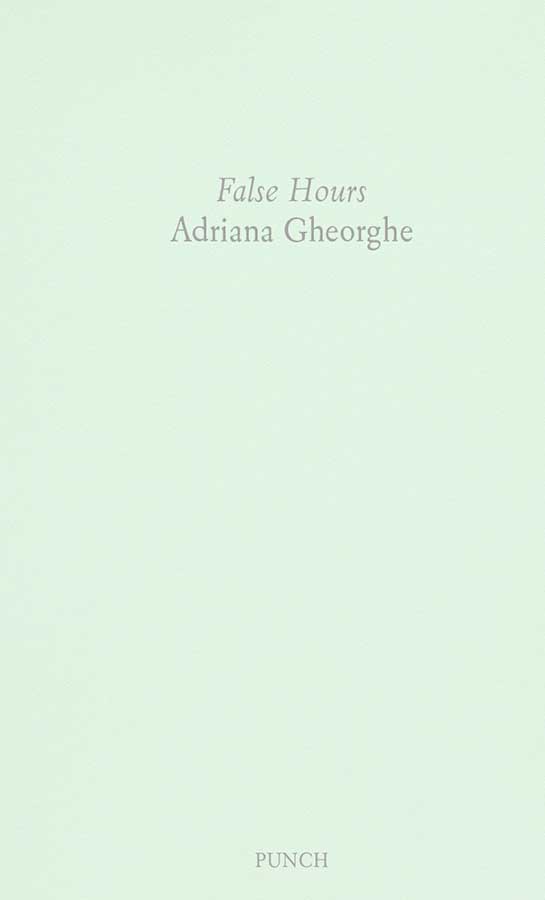
False Hours
Adriana Gheorghe works with performance and writing and a gravely irreverent sense of indeterminacy, while in relation to contexts (conceptual, physical, political, human), and for the reformulation of the same ongoing artistic and living practice – the performative imagining of the humans in relation to language and representation, hijacking subjectivity and identity with the crack of endless potentiality.

Square of Will in Square of Love
A collection of texts, notes and drawings from Alina Popa (1982-2019), edited as a tribute publication by her longtime accomplice, the artist Florin Flueras. A political and theoretical work that questioned both the intimate and social mechanisms of the contemporary.
Square of Will in Square of Love gathers a selection of texts, notes and drawings by Alina Popa, edited by Florin Flueras. Most texts are more poetic and more personal than Alina’s previously published writing, “...a mixture of styles, subjects and mediums—theory, poetry, drawings, diary notes, it's unclassifiable, as she liked it.” (Florin Flueras).
Alina Popa (1982-2019) was a Romanian artist who moved between choreography, theory, and contemporary art.

Spread Wide
Rebecca Stevens, John Cussans and 2 more
Various artists and authors use two writers' correspondence as a primary source to develop an artistic and literary falsification. In this collaborative volume, the writer and artist Paul Buck works with the late 29 Kathy Acker. Using as source the raw materials of their correspondence from the early Eighties, a period when Acker was writing Great Expectations and trying to leave America for London, Buck confronts issues of appropriation, sampling, and plagiarism, relevant then and now.
Further encounters are triggered by writer Rebecca Stephens, artist John Cussans... and playwright Richard Foreman, artist Susan Hiller, musician David Coulter. Kathy Acker (1947-1997) was at the forefront of transgressive writing from the Seventies until her death. Her provocative intertextual narratives—halfway between autobiography and pornography—were developed in lectures, performances and films (Variety, Bette Gordon).
Her published work includes Blood and Guts in High School (1984), Don Quixote (1986), and Empire of the Senseless (1988). Rebecca Stephens escaped the chains of theology teaching to write on Saints and Courtesans, subjects on which books are in the pipeline.
John Cussans is a writer, artist and researcher who has exhibited regularly in London, Berlin, Slovenia, Vienna, Vancouver. In 2001 he founded The Bughouse, an art-event generator inspired by the work of Philip K. Dick. Paul Buck (born 1942, United Kingdom) is a British poet, performer and author of more than fifty crime novels. He has been challenging notions of writing, narrative, and the limits of the feasible since the late Sixties in books like The Honeymoon Killers, Violations and Lust, Walking into Myself... Chief editor of Curtains magazine, he introduced many French authors to the English audience.
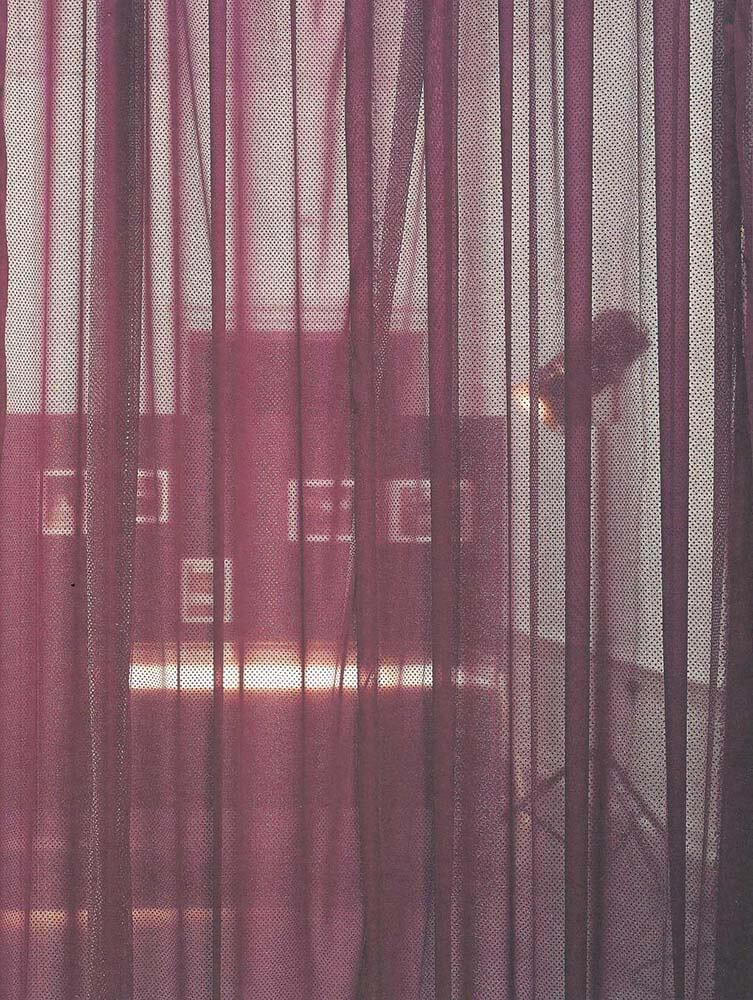
Aftershow
A monograph / artists' book that engages with the recent film installations of Pauline Boudry / Renate Lorenz. Installation shots, research material, scripts, and film stills give an insight into the artists' investigation of performance in film and their dense net of references to experimental film, the history of photography, sound, and underground (drag) performances.
The book's title alludes to an interest in opaque events that are belated, left backstage or off-screen. A number of (fictitious) letters to friends and collaborators such as Sharon Hayes, Yvonne Rainer, Ginger Brooks-Takahashi, and Jack Smith place the work of Boudry & Lorenz in a context of debates around temporalities, activism, the archival, decolonizing practices, and queer histories. Published following the exhibition “Patriarchal Poetry” at the Badischer Kunstverein, September 27– November 24, 2013.